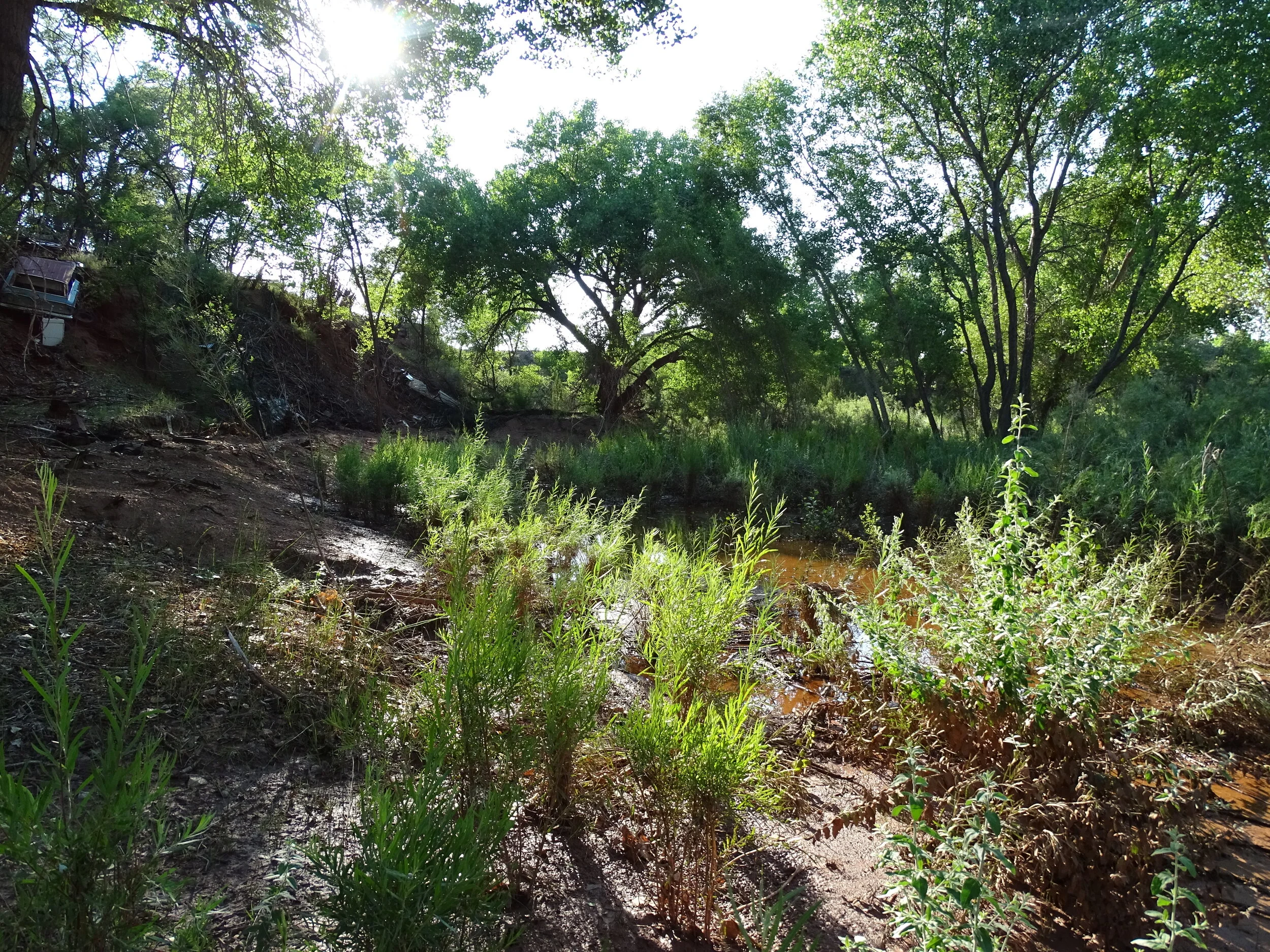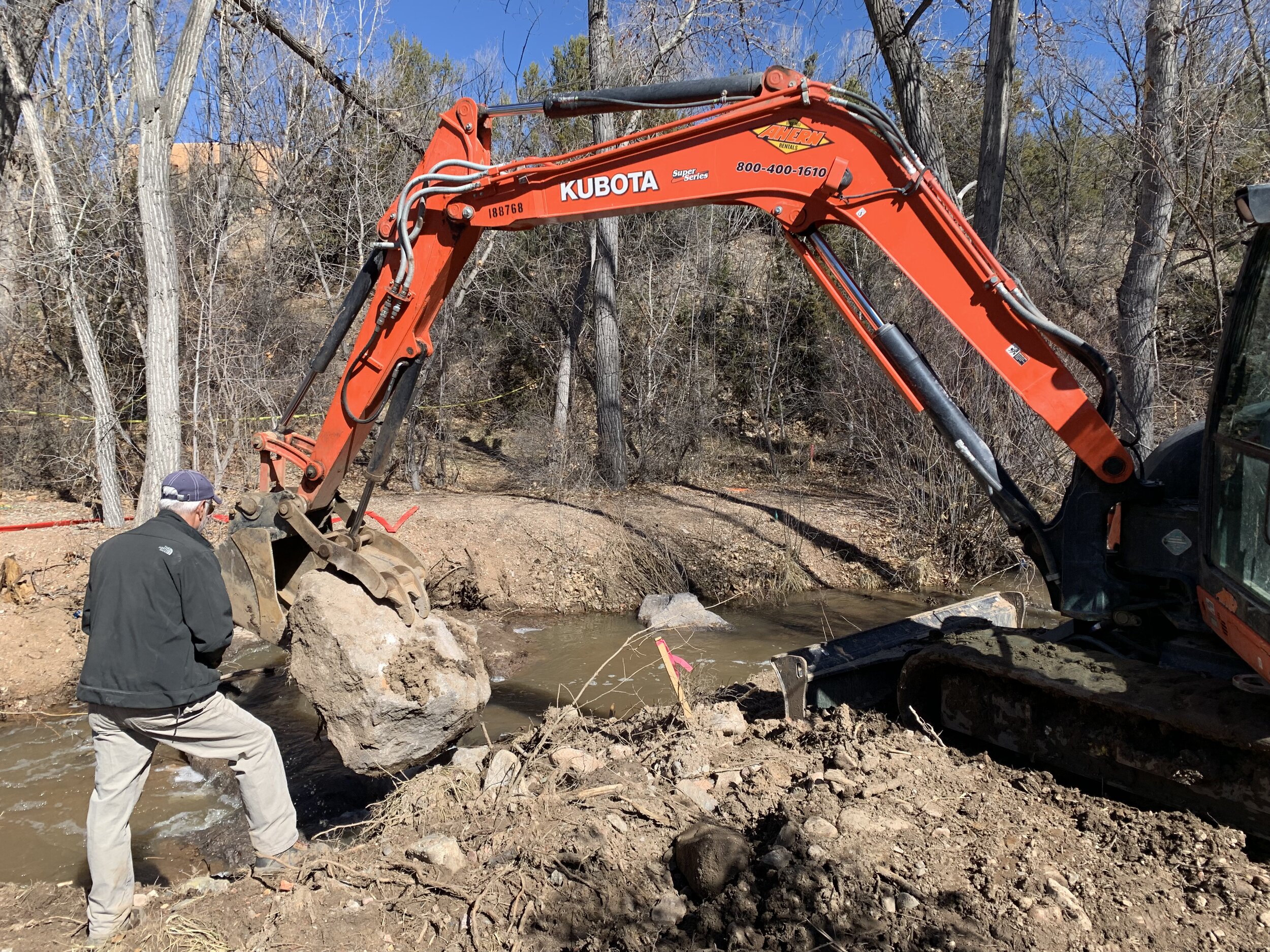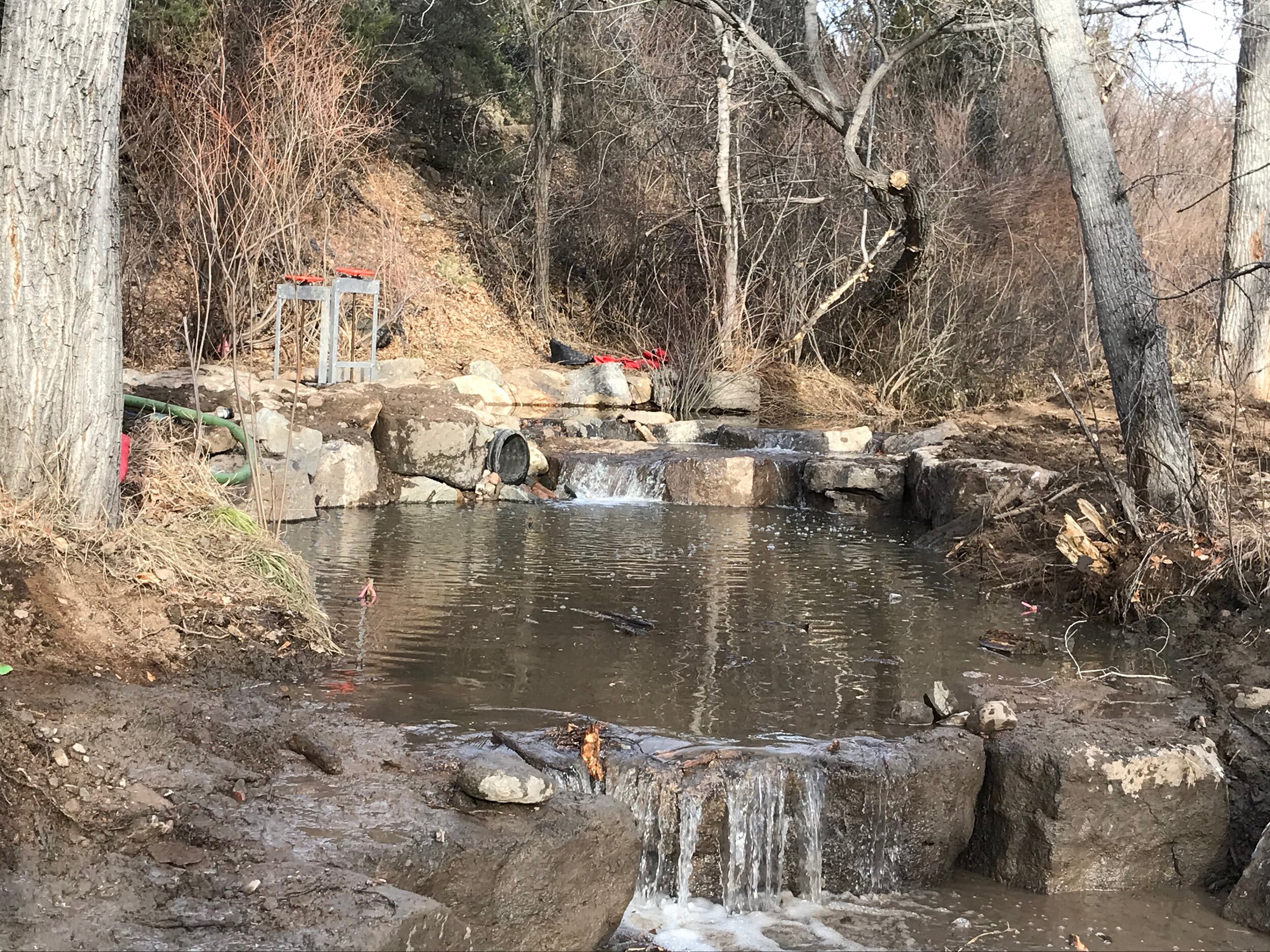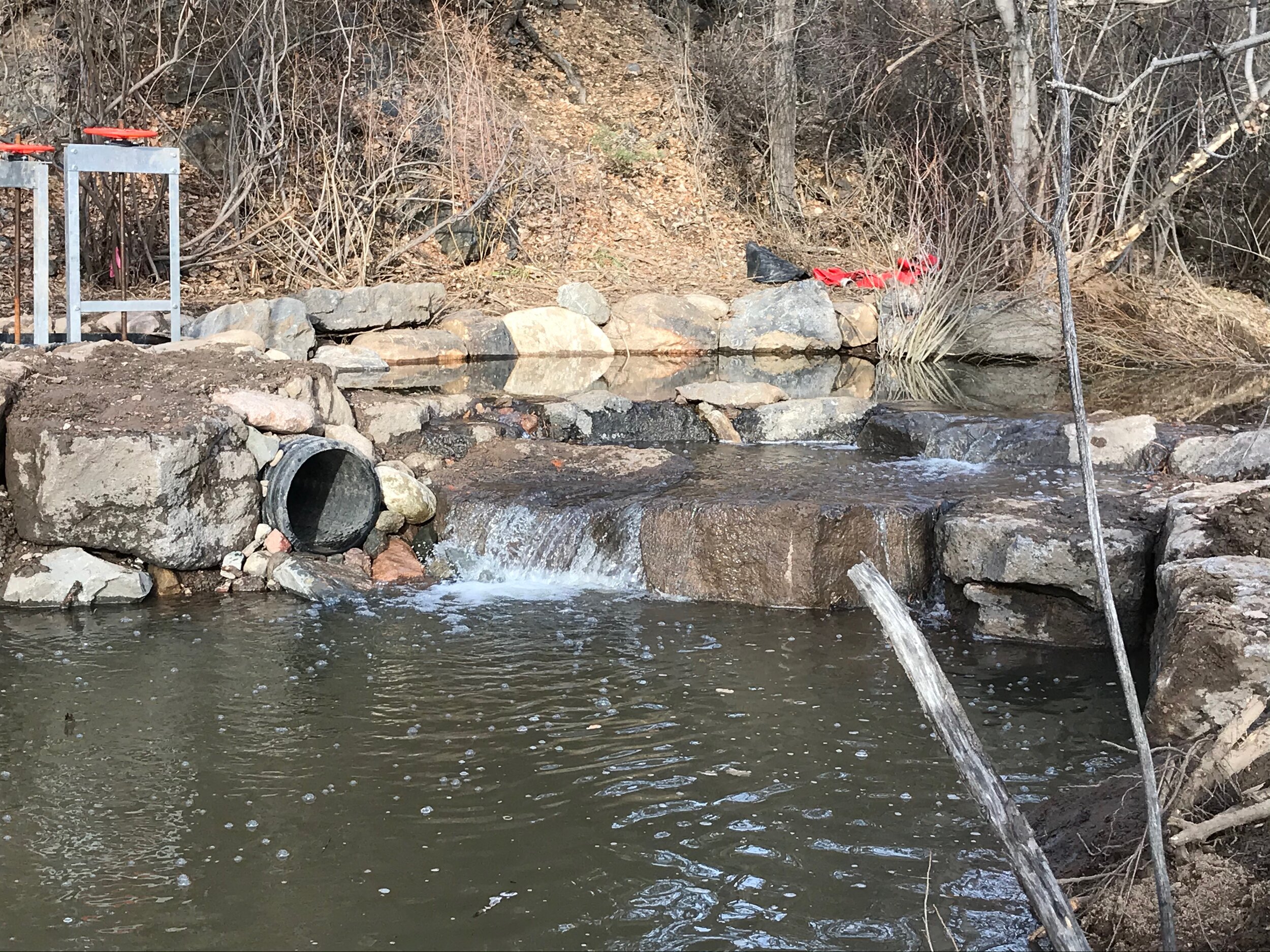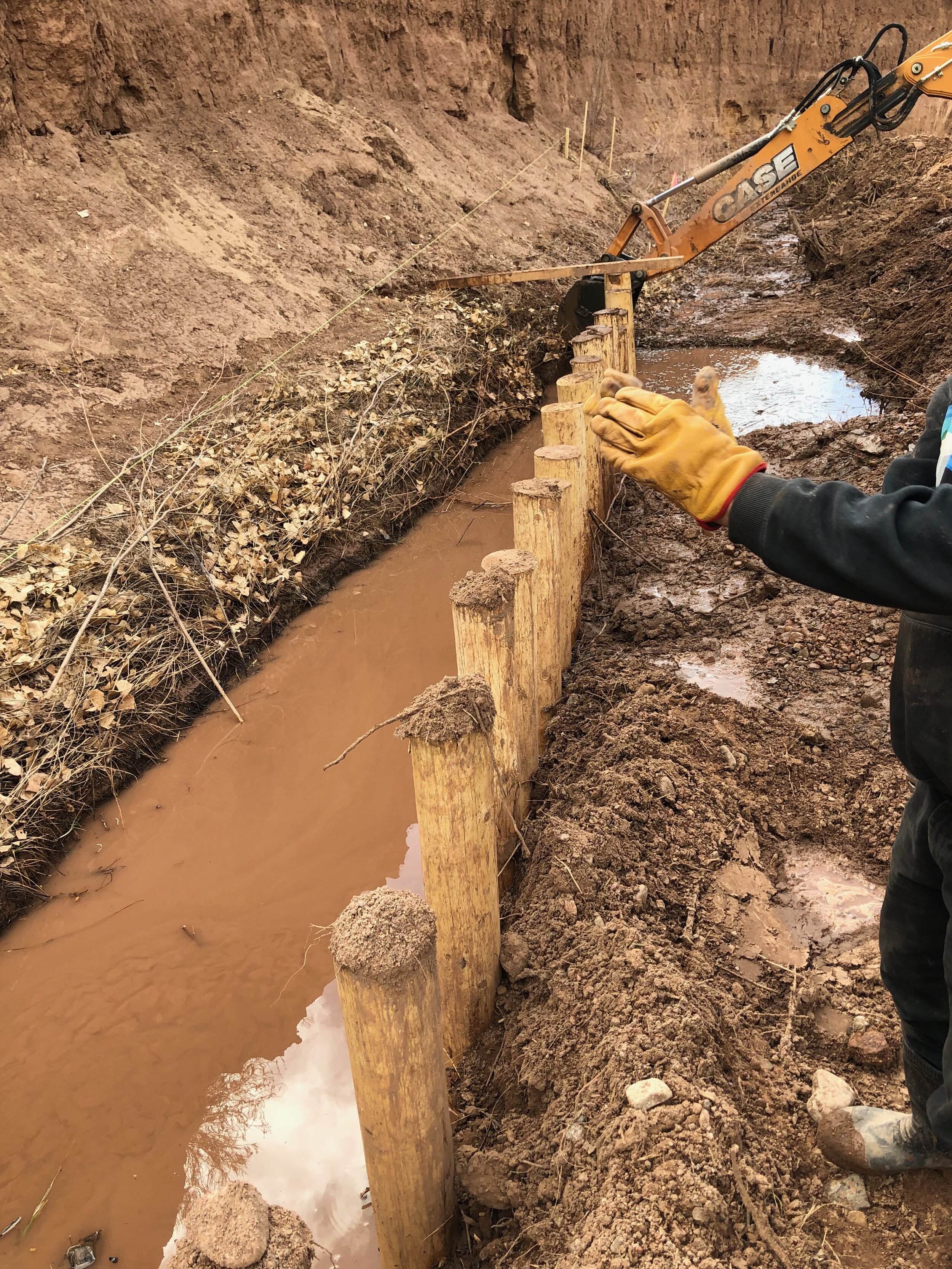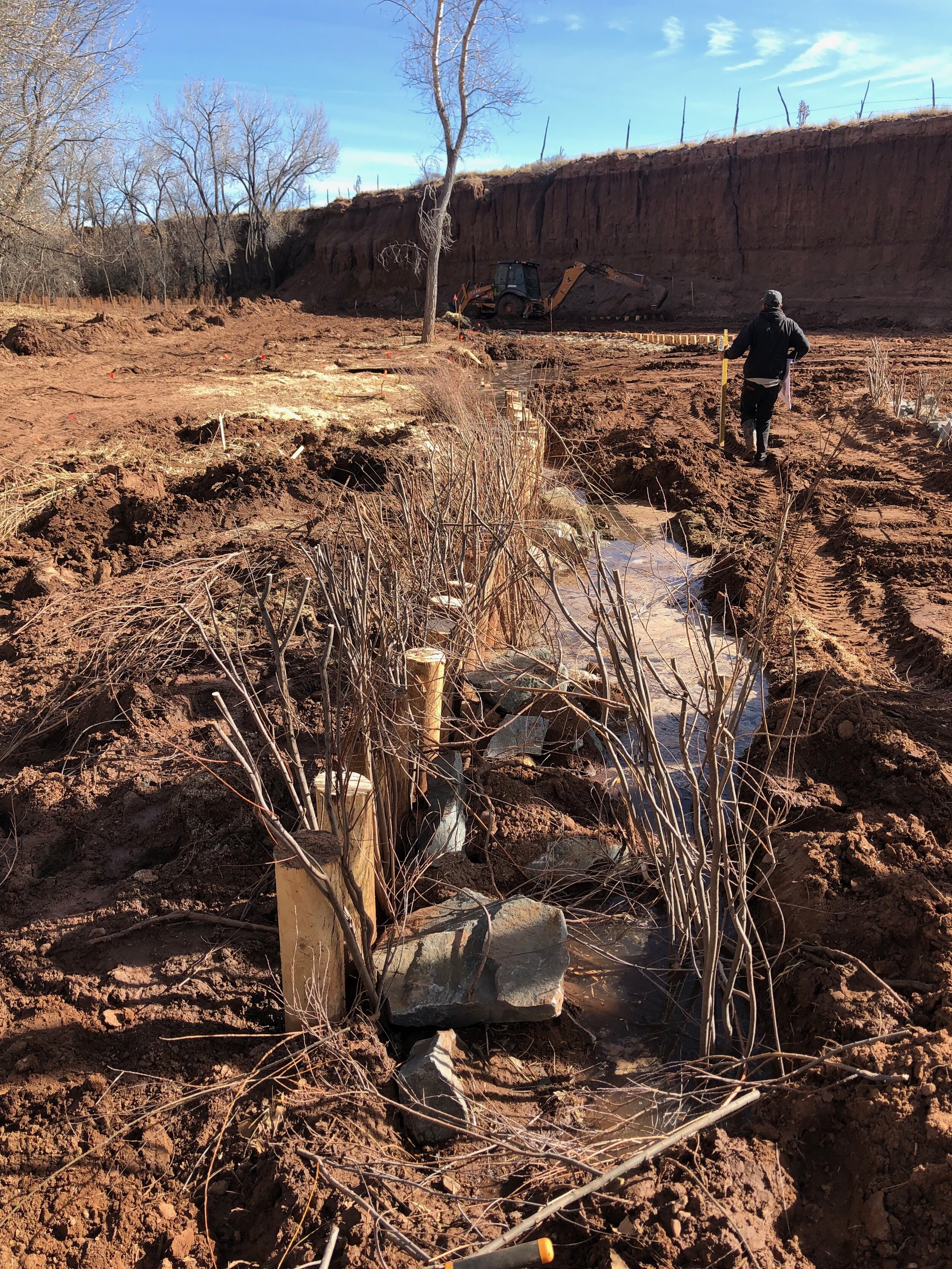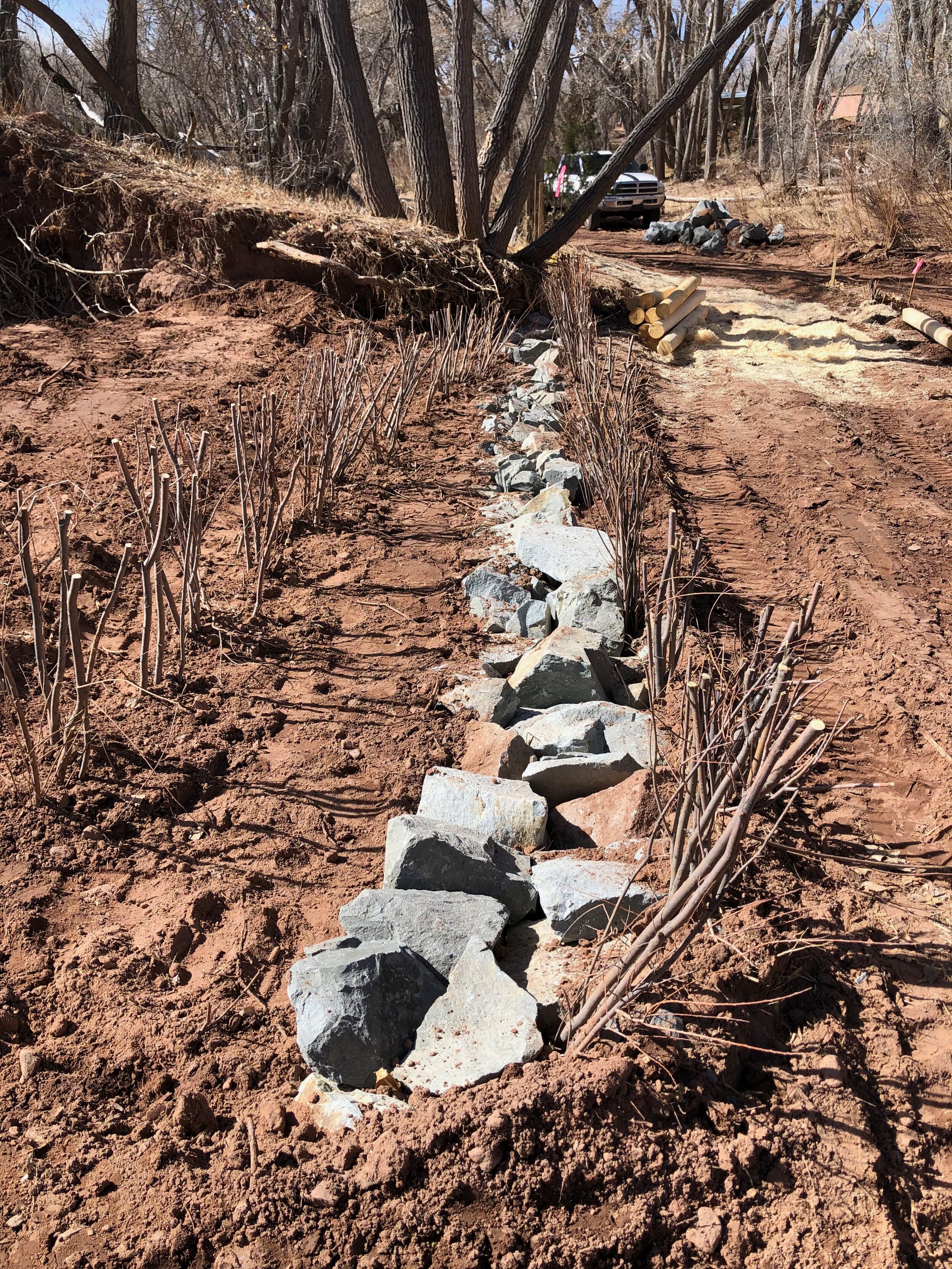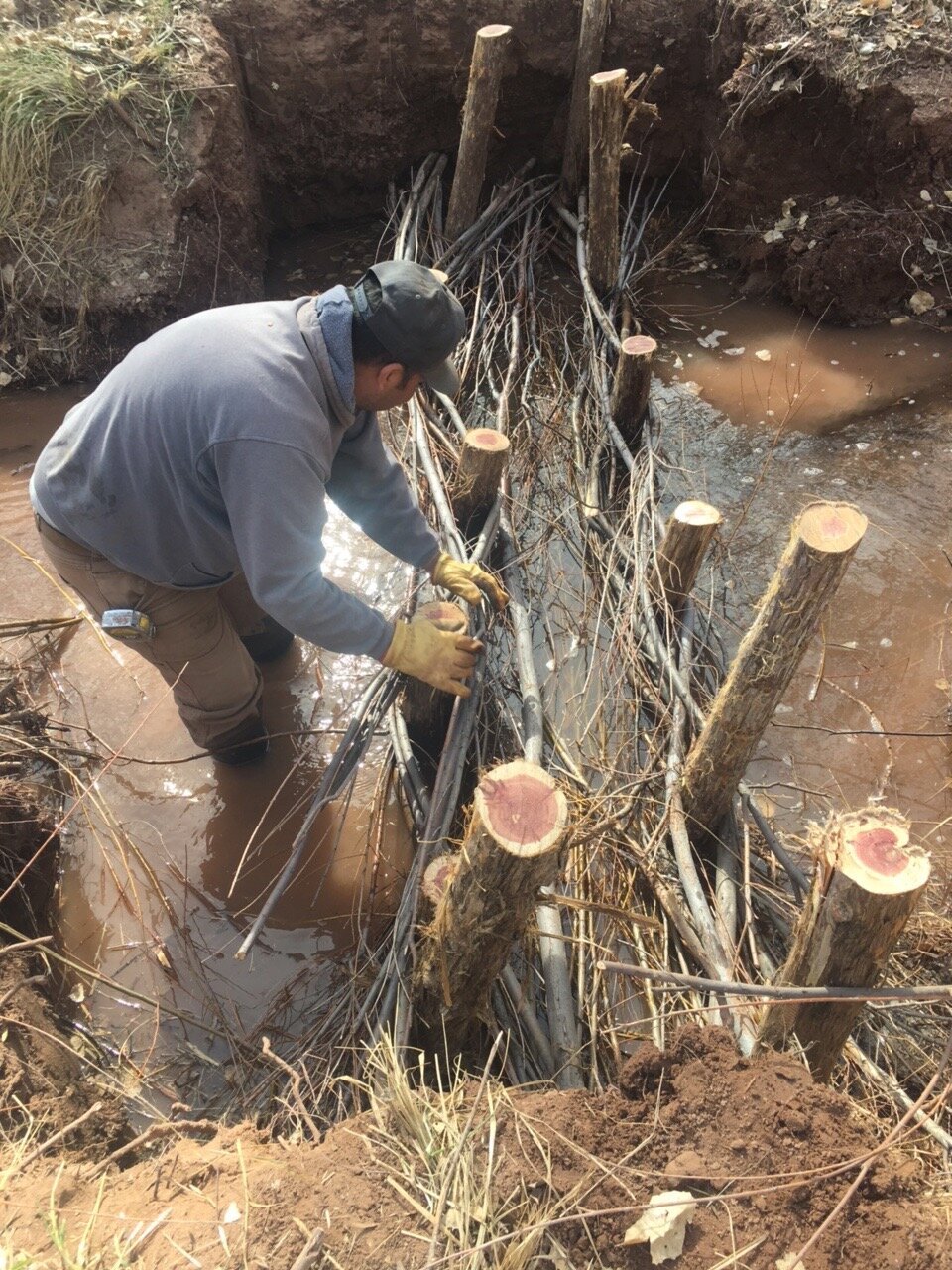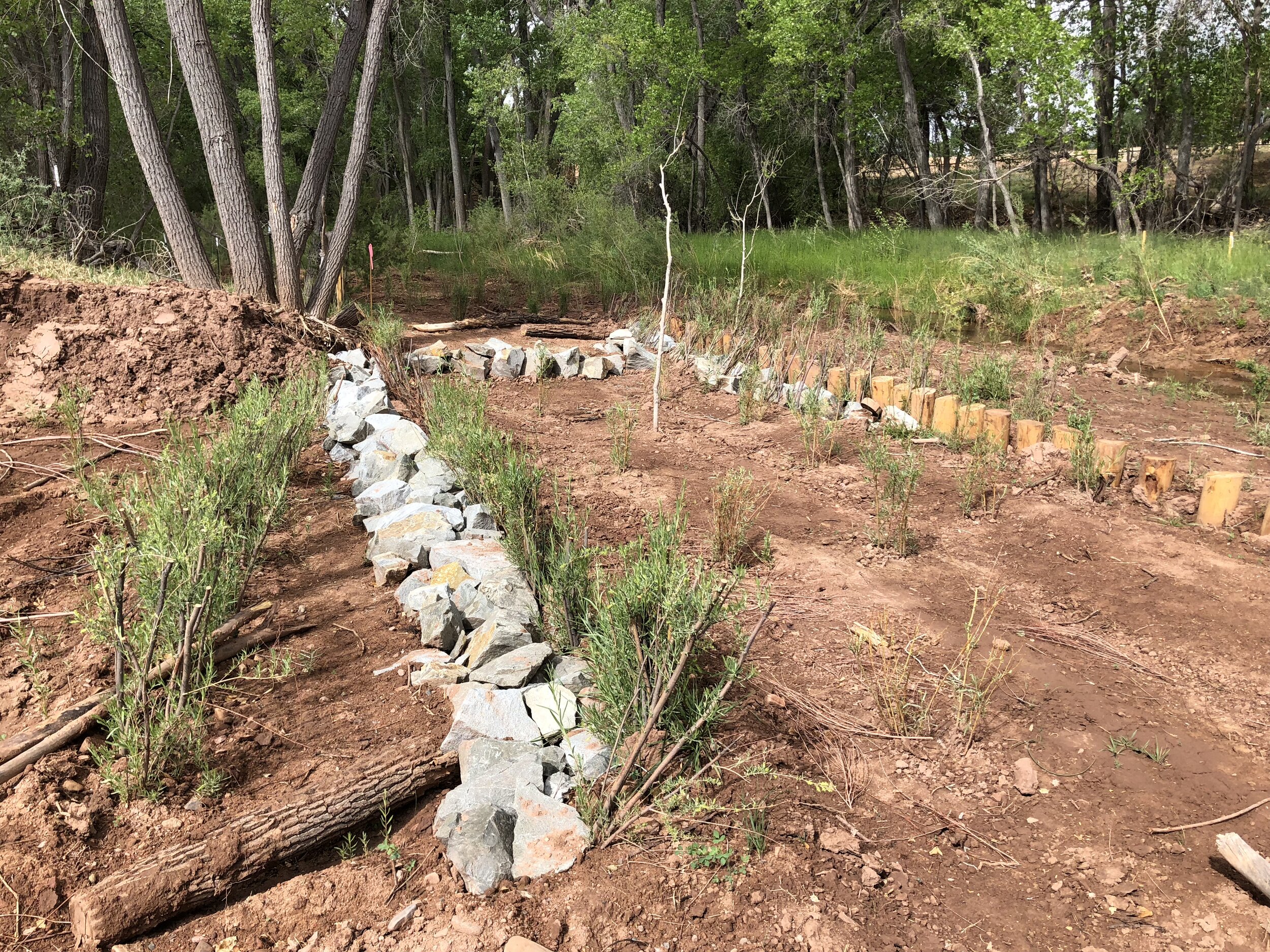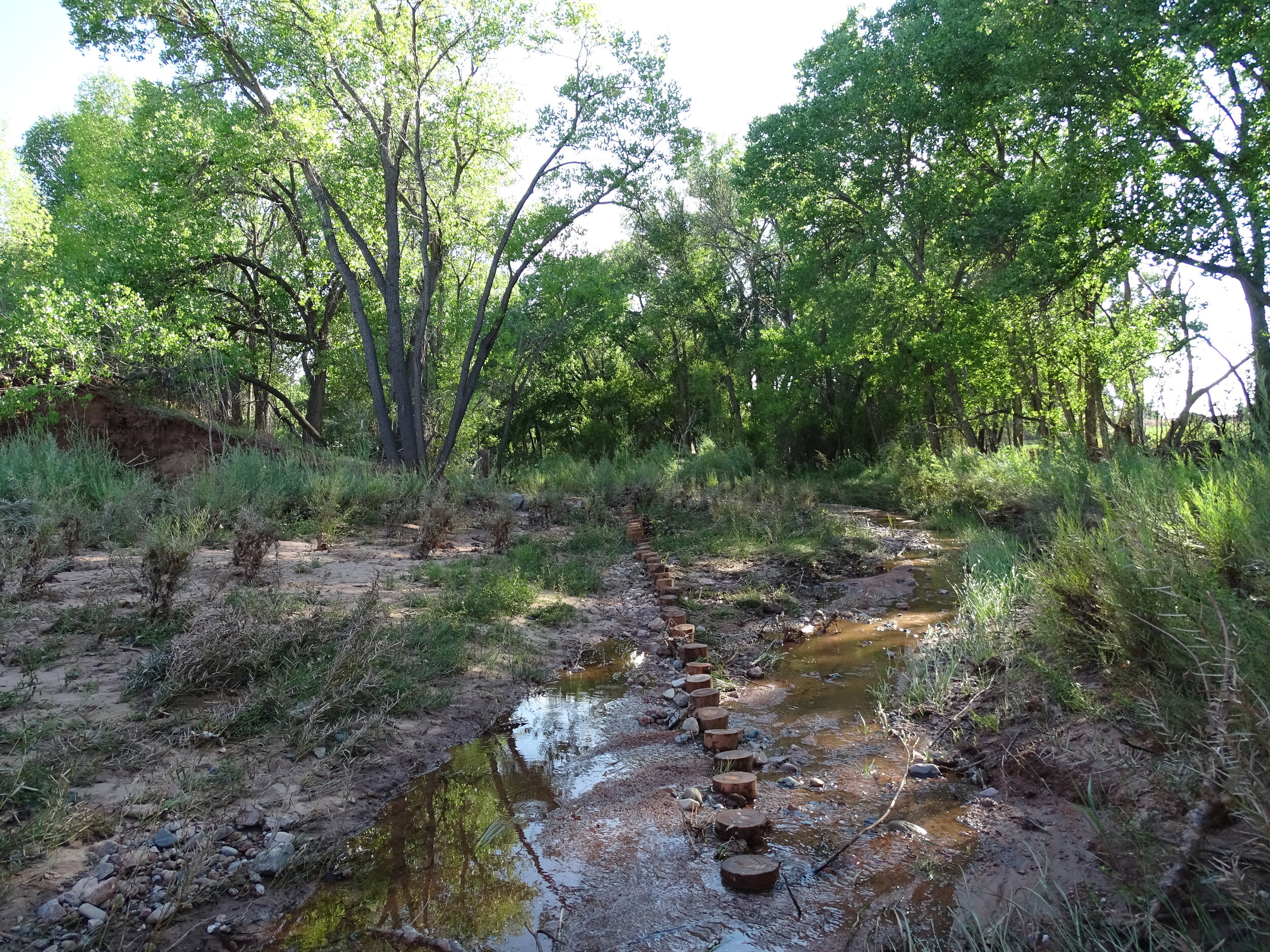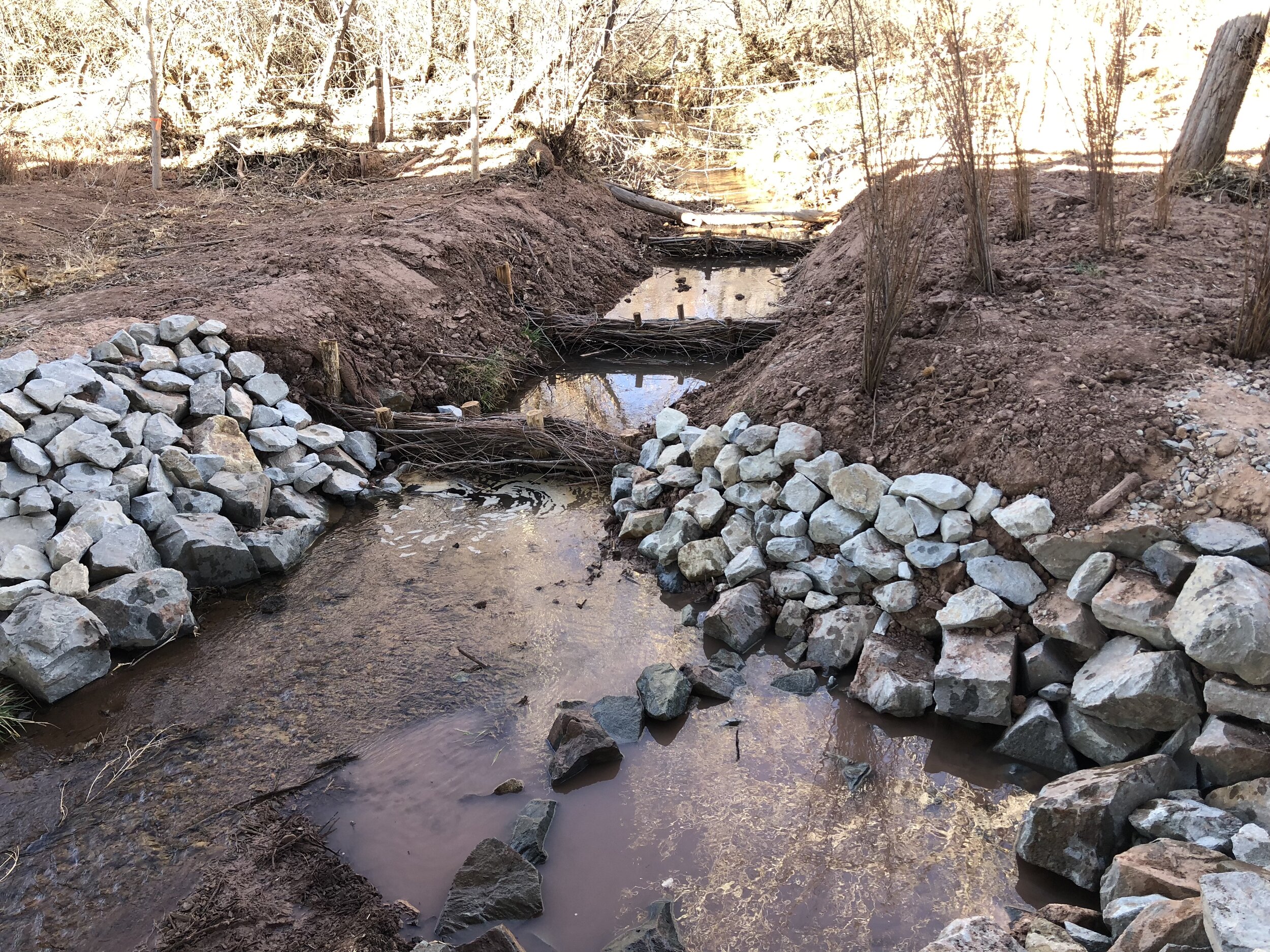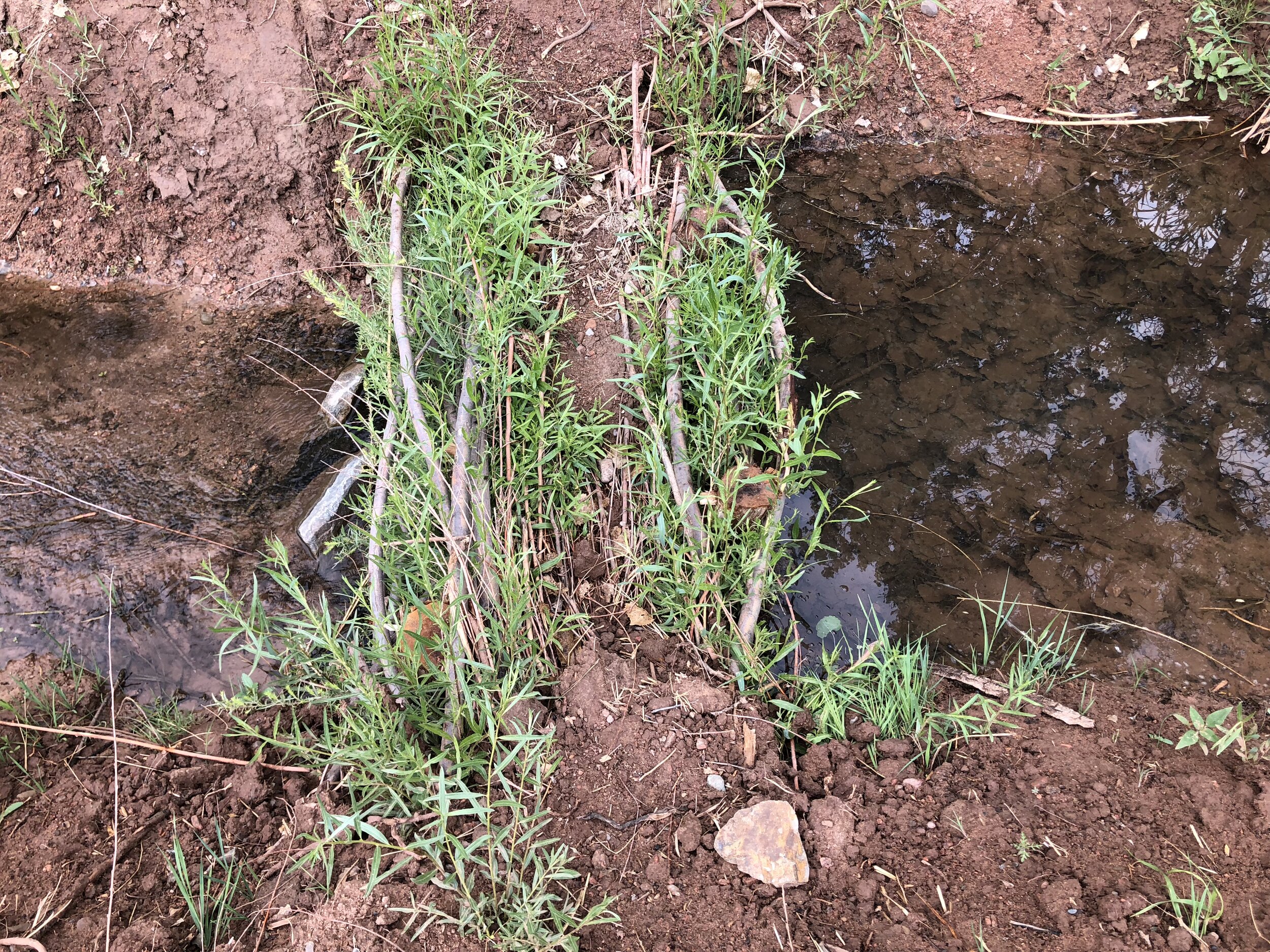Many rivers and watersheds in the southwest are in a degraded state, due to decades of unsustainable land practices. So, how can we be a part of the solution?
Over the years, San Isidro has partnered with landowners, engineers, state government, and the Army Corps of Engineers to implement regenerative practices in riparian areas.
Some commonly-used techniques aim to raise the water level and slow the flow of the river. This creates more wet areas along the banks, facilitating wetlands and wildlife habitat similar to the ones we’ve lost over time. Rock vanes are a good example. San Isidro was awarded the contract to install large rock boulder vanes to raise the level of the Santa Fe river while reducing soil erosion. The area was planted with hundreds of native trees and seeded with beneficial grasses and wildflowers. The Acequia de Muralles headgate was also upgraded to supply irrigation water to orchards downriver.
Other practices slow and direct flow in intelligent ways, allowing the river to deposit sediment along the banks and restore eroded soil. A commonly used technique is that of “post vanes”, where rows of wooden posts are placed vertically in the riverbed, arranged in a line and pointed upriver at a specific angle. Post vanes have multiple benefits: they protect structures downstream, while creating a wet bank that can be planted with native vegetation. Once willows and cottonwoods are established, they continue the work of holding that soil in place, while also providing ecological functions such as sequestering carbon and increasing wildlife habitat. This project on the Galisteo river included post vanes and willow wattle dams to create a larger wetland area that was planted with hundreds of native plants.
One of our greatest joys is visiting a site months or years after completion, and seeing the positive changes that have developed over time. It’s so exciting to see the birds and trees come back with a little help!

